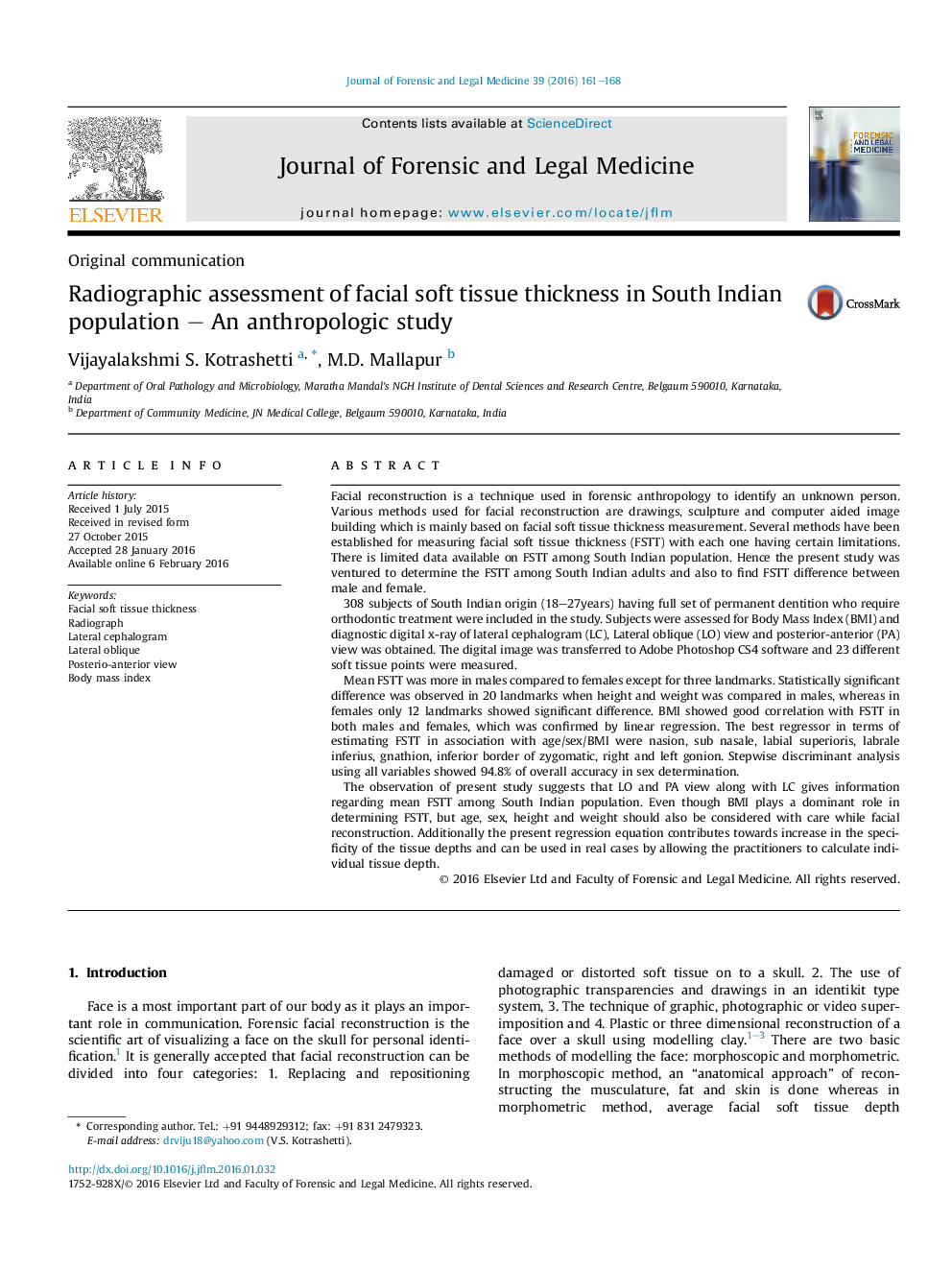| کد مقاله | کد نشریه | سال انتشار | مقاله انگلیسی | نسخه تمام متن |
|---|---|---|---|---|
| 101658 | 161287 | 2016 | 8 صفحه PDF | دانلود رایگان |
• Manuscript highlights mean facial soft tissue thickness in South Indian population.
• First study carried out on South Indian population and also using digital radiographic technique.
• Statistical analysis has helped to compare the variables like age/sex/BMI and height with FSTT in accurate way.
• Results confirms that BMI plays a dominant role in the alteration of soft tissue thickness.
• Also provides best regressor that can be used for facial reconstruction considering the parameters like sex/BMI, height.
Facial reconstruction is a technique used in forensic anthropology to identify an unknown person. Various methods used for facial reconstruction are drawings, sculpture and computer aided image building which is mainly based on facial soft tissue thickness measurement. Several methods have been established for measuring facial soft tissue thickness (FSTT) with each one having certain limitations. There is limited data available on FSTT among South Indian population. Hence the present study was ventured to determine the FSTT among South Indian adults and also to find FSTT difference between male and female.308 subjects of South Indian origin (18–27years) having full set of permanent dentition who require orthodontic treatment were included in the study. Subjects were assessed for Body Mass Index (BMI) and diagnostic digital x-ray of lateral cephalogram (LC), Lateral oblique (LO) view and posterior-anterior (PA) view was obtained. The digital image was transferred to Adobe Photoshop CS4 software and 23 different soft tissue points were measured.Mean FSTT was more in males compared to females except for three landmarks. Statistically significant difference was observed in 20 landmarks when height and weight was compared in males, whereas in females only 12 landmarks showed significant difference. BMI showed good correlation with FSTT in both males and females, which was confirmed by linear regression. The best regressor in terms of estimating FSTT in association with age/sex/BMI were nasion, sub nasale, labial superioris, labrale inferius, gnathion, inferior border of zygomatic, right and left gonion. Stepwise discriminant analysis using all variables showed 94.8% of overall accuracy in sex determination.The observation of present study suggests that LO and PA view along with LC gives information regarding mean FSTT among South Indian population. Even though BMI plays a dominant role in determining FSTT, but age, sex, height and weight should also be considered with care while facial reconstruction. Additionally the present regression equation contributes towards increase in the specificity of the tissue depths and can be used in real cases by allowing the practitioners to calculate individual tissue depth.
Journal: Journal of Forensic and Legal Medicine - Volume 39, April 2016, Pages 161–168
